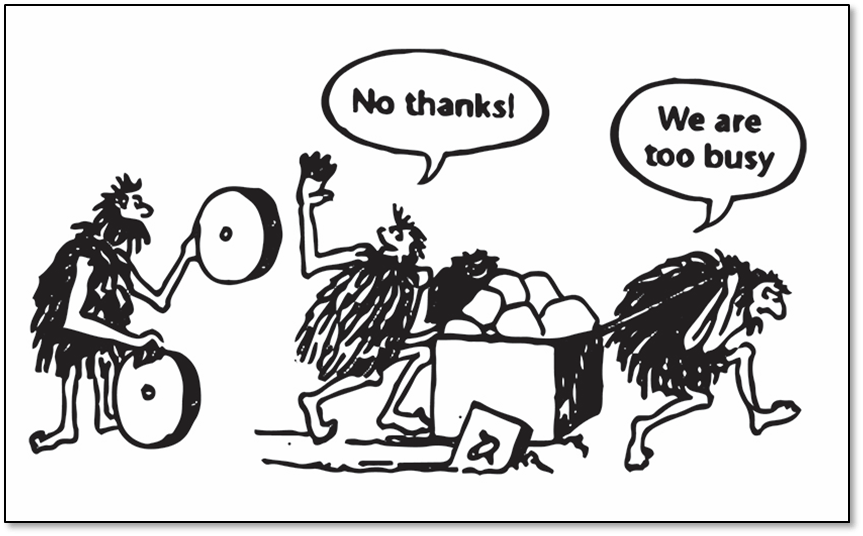
- Insight
- Monday 30th January 2023
CDM myth #5: No one is adopting it
This latest instalment in my CDM myth-busting series is somewhat overdue... Not just because my previous one was published months ago, but also because I have sat on its synopsis for so long. Indeed the content for my solution looking for a problem post last year kept overflowing so I decided to cut it short and save the spare bits for a stand-alone article. I then (foolishly) promised this sequel to some readers...
So here we are after a few months' delay with myth # 5: "No one is adopting CDM". Ironically with the time that has elapsed since, and the announcement of a production use of the CDM for Digital Regulatory Reporting (DRR) last November, that myth has lost some of its salience. More on DRR later - but regardless, I think the adoption myth, or lack thereof, is an interesting one to address.
The number of applications using the CDM has firmly crossed into two-digit territory.
I mostly hear this trope expressed as a question with skeptical undertones: "Who has adopted CDM?" Invariably my response is this:
Why is that? Because, as I explained in my earlier post, the CDM is not a solution to a particular problem - it is an enabler of solutions. Therefore, no one is "adopting" it to solve, say, inefficiencies in processes such as collateral management, trade reconciliation or even regulatory reporting, for that matter. What the CDM does is that it:
- greatly accelerates the development of those solutions and
- makes them interchangeable and interoperable.
It's a bit like rails. No one is adopting them as a mean to go quickly and reliably from A to B - a train does that and, as far as the traveller is concerned, is what matters: how fast or frequent is it, how comfortable is the carriage etc? But it sure is a hell of a lot easier for trains to operate, and provide some form of interchange, when they have rails to run on. In that sense, the CDM is a piece of infrastructure which other solutions, services and applications can run on.
This analogy also shows why it's a mistake to obsess over the adoption metric. Instead, the set of indicators to look at should include:
#1. How many solutions, services and applications are or have been developed based on the CDM as their infrastructure?
#2. What efficiency gains (time, money etc.) are these solutions allowing their users to realise?
#3. How much has the CDM accelerated the time-to-market of those solutions, or plainly made them viable (Note how the CDM is only impacting efficiency indirectly here - by enabling solutions to be built in the first place).
So let's take these key indicators and measure how the CDM has performed against them.
On # 1 - the number of applications using the CDM, exact numbers are hard to come by and a lot of those that are still in development phase aren't public. But using anecdotal evidence from our work with industry members, we have firmly crossed into two-digit territory.
This "silent user" is a typical open-source phenomenon that should be positively embraced by the trade associations.
One particular theme that has seen the industry coalesce around in 2022 is collateral management, with an important breakthrough to standardise collateral eligibility in the CDM through the so-called Eligible Collateral Model (ECM). Much more work remains to do in this area but a strong and diverse group of industry participants made of buy- and sell-side firms, custodians and technology vendors have committed resources to the development of the ECM and its implementation. With the three trade associations, ISDA, ISLA and ICMA, now joining forces on the development of the CDM under FINOS, the surface area of the ECM is getting substantially larger and will eventually impact all of capital markets.
Another interesting aspect of open-source is that we only know what we can about users. For every firm who have publicly declared themselves as a CDM implementor, there exist others who are also using it even if they haven't come forward. This could be for a variety of reasons, including commercially-sensitive new product development. This "silent user" is a typical open-source phenomenon that should be positively embraced and the trade associations must strive to engineer the CDM to support itself with no external help. As I like to put it: the day when someone uses the CDM and we don't know about it is the day when we win.

On # 2 - efficiency gains, this really boils-down to a case-by-case basis. Early estimates of the overall cost reduction that CDM implementation could generate crystallised around a $3-4BN number. I personally think the real number could be much higher. But regardless, this is best left to a free-market process to identify these bottlenecks and then unleash the forces of creative destruction to work their magic.
In that regard, one interesting development is in the make-up of the "core" CDM community actively contributing to its development. This group features an increasing number of technology vendors, some established and some more green shoots. The one thing they all have in common is that they have identified some of these bottlenecks, are building solutions to remove them, and have figured a commercially viable way to share the gains with their clients.
Which brings me to # 3 - time-to-market and feasibility. This is really the metric that matters the most in the short- to medium- term. Because let's face it, like any rail, bridge or road infrastructure project, the CDM is a case of "build it and they may come". The point is this: you don't know for sure, you're making an educated guess that they probably will, however what you do know is that if you start building it when they need it, it's already too late. Most of the time, railway-laying is ungrateful stuff.
It sure is a hell of a lot easier for trains to operate when they have rails to run on.
DRR offers a perfect illustration of this infrastructure curse. One reason why DRR could successfully be deployed to fulfil the new CFTC requirements is that the CDM had already reached a certain level of maturity. It was in its 4th year of development back at the end of 2021 when DRR shifted its focus onto the CFTC Rewrite. To be sure, the CDM had gaps that needed to be filled before it could be "CFTC-ready". But it had a big head-start - including, for instance, a recently revamped lifecycle event model which turned out to be instrumental for trade reporting. And the CFTC requirements spurred some model developments, such as financial commodities, that will have staying power in the CDM beyond the reporting use-case. We built it, they came, and then they built some more.
With apologies for the perhaps painful regulatory throwback, but compare that if you will to how the industry prepared for SFTR back in 2019-20. Given the vast budgets required, the idea of putting the CDM to work to mutualise its implementation (effectively doing "DRR for SFTR") had appeal. Sadly, the securities finance industry had yet to catch-up with the technology and much development remained before the CDM could cover that market. They came but it wasn't built, so they turned elsewhere.
In conclusion, in both cases it was the CDM, or its absence, that made all the difference between DRR being a viable proposition or not under the regulatory-imposed deadline. That's infrastructure right there.
Please get in touch with REGnosys to see how we can help you benefit from the CDM and DRR - using all the cool features of Rosetta.





